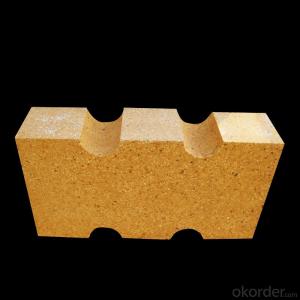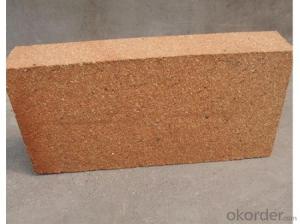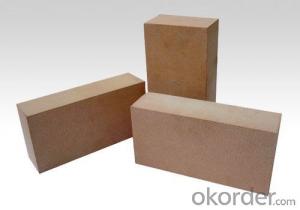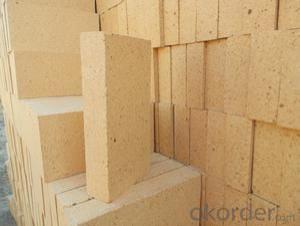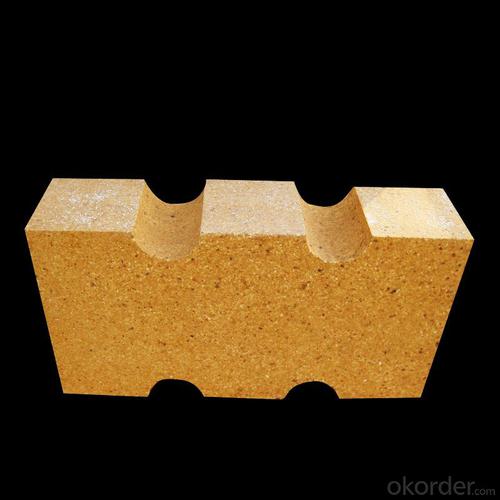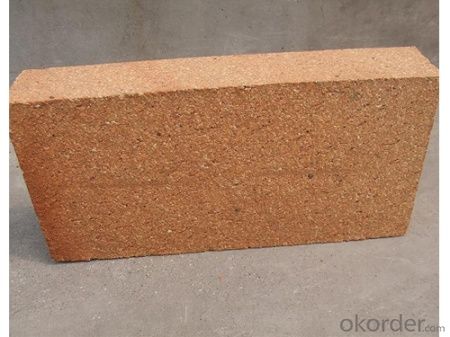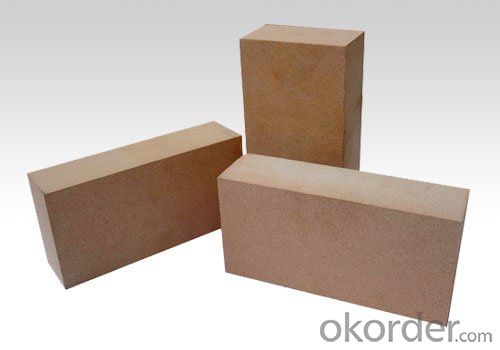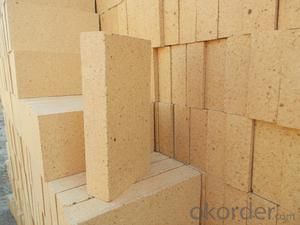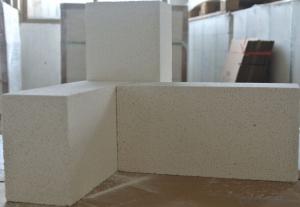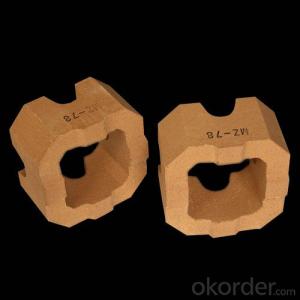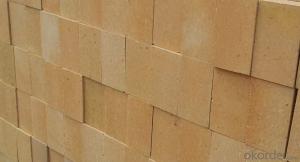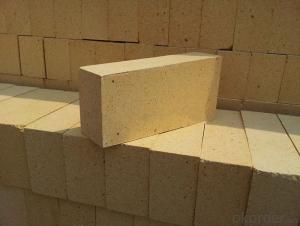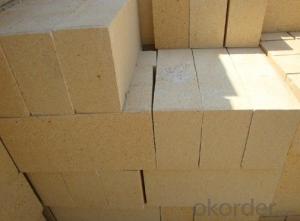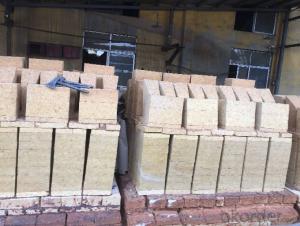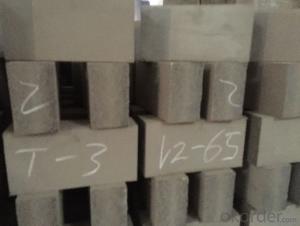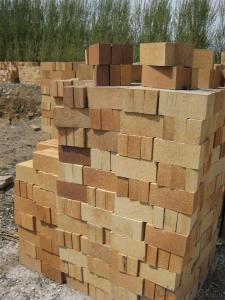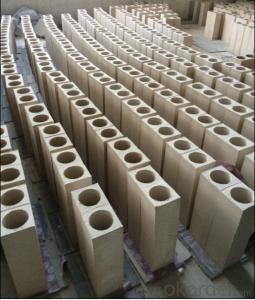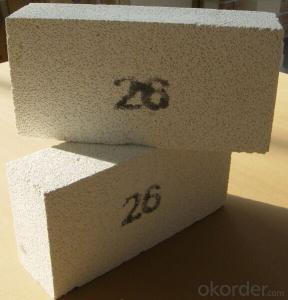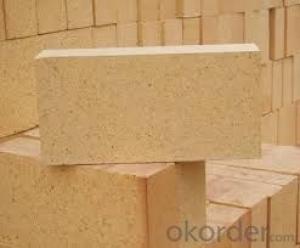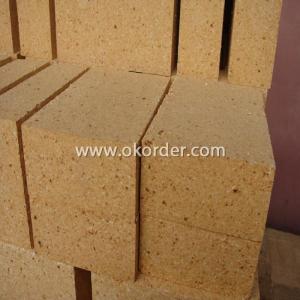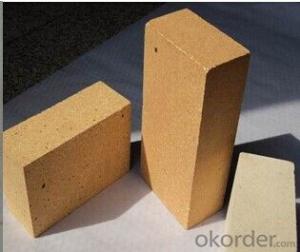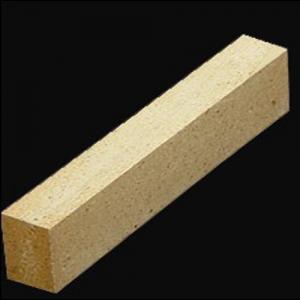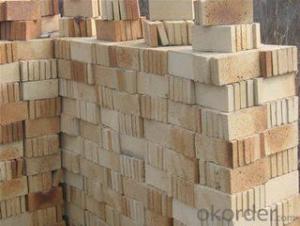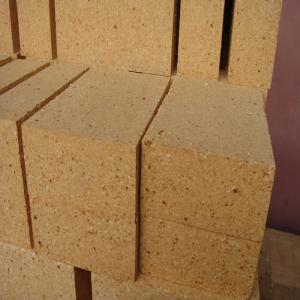Fireclay Brick for Tunnel Kiln Refractory
- Loading Port:
- China main port
- Payment Terms:
- TT OR LC
- Min Order Qty:
- 1 m.t.
- Supply Capability:
- 1000 m.t./month
OKorder Service Pledge
OKorder Financial Service
You Might Also Like
Refractory Fireclay Bricks with Tunnel Kiln is a kind of insulation material adopting organic matter as ignition loss substance in order to increase the porosity of refractory, which has such advantages as high porosity, small volume density, good insulation effect, high mechanical intensity, small thermal conductivity and long service life. For various industrial kilns & furnaces, it is a kind of essential refractory for energy saving and temperature preservation.
This series of Refractory Fireclay Bricks with Tunnel Kiln are made of selected high alumina bauxite, kaolin clay, hollow microsphere as the mian material.By shaping at high pressure and sintering at high temperature
Product Applications:
1. Furances of glass,coke oven,electric and so on
2.Furnaces of metallurgy industry, heat treatment furnace
3. Furnaces of chemical industry and construction industry.
4. Furnace of incineration of garbage, recirculating fluidized bed furnace
5. Standard sizing: 230 x 114 x 65 or 75 or 25 mm others up to the client
Main Product Features:
1. Low porosity,High bulk density.
2. High Cold Crushing strength.
3. High refractoriness under load.
4. High mechanical strength.
5. Good resistance to erosion.
Product Specifications:
1.With 55% Al2O3 min;
2. Refractoriness: 1750C min;
3.For steelmaking furnaces;
4.ISO 9001 Certificate;
5.Custom shape;
Technical data:
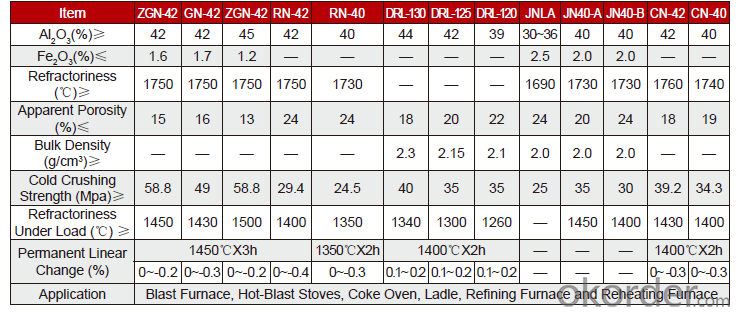
Q1 What’s the transport method?
A1 FCL delivery goods with wooden pallet or wooden case by sea; If LCL delivery, must with wooden case; Sometimes need open top, flat rack or bulk cargo.
Q2 What’s the required payment term?
A2 Generally 30% TT as the prepayment, 70% TT before delivery. If need, 100% Irrevocable Letter of Credit or negotiation.
Q3 Which country are our products exported to?
A3 Apart from entire Chinese market, the US, Russia, Japan, Korea, Australia and some Southeast Asian Nations.
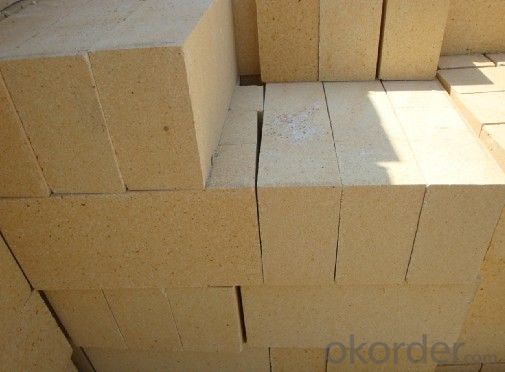
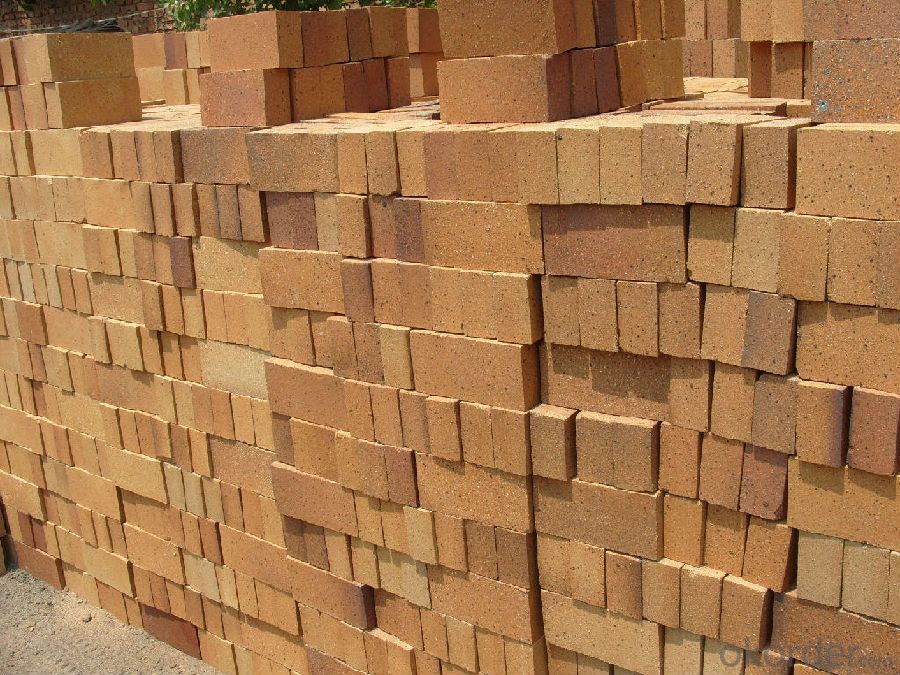
- Q: what is consequence of high load and soft low of high alumina refractory brick ?
- softening, if not up to the design requirements, may cause vicious incident like the collapse of the stove in use. the full name is softening temperature under a fixed load, as the name suggests, it is the softening temperature after adding the load.
- Q: What are the weak points of clay bricks?
- In the temperature range of 0~1000 DEG C, the clay brick volume increases with temperature uniform expansion, linear expansion curve approximates a straight line, the line expansion rate is 0.6%~0.7%, about half of the brick. When the temperature reaches 1200 degrees Celsius and then continues to heat up, the volume will begin to shrink from the maximum expansion. The residual shrinkage of clay brick results in the cracking of masonry joints, which is a major drawback of clay bricks. When the temperature is above 1200 degrees, the low melting point of the clay brick gradually melts because the particles are very close to each other due to surface tension, resulting in volume shrinkage.
- Q: Why should the clay bricks be watered first when they are building masonry walls?
- And because a portion of the water in the mortar brick absorb, can lead to early dehydration, but are not very good on the hydration of the brick and mortar bond strength weakened, greatly reduce mortar and masonry compressive strength, shear strength, affecting the integrity and seismic performance of masonry.
- Q: What are the differences between sintered bricks and refractory bricks?
- Easily weathered. There is no obvious difference in the usage between fired pavingbricks and refractory bricks; sintered bricks are generally used for residential road and landscape engineering, they do not fade; refractory bricks are used for all kinds of kiln constructions in plant: It is not anti-freeze (when the temperature is below the zero degree, the brick will easily "blister" in the saturated state), the reasons are high compressive strength and high temperature zone' heat insulation and so on. Fired pavingbrick is a powerful vacuum extrusion type. Fire suppression road brick is high temperature furnace brick, which is not suitable to be used as road brick. Its characteristics are: Wear resistance and freeze-thaw resistance (the anti freeze-thaw cycle of brick is more than 50 times in saturated state), non weathering, sidewalks, short service life. Sintered brick belongs to the building material, refractory brick belongs to the industrial kiln material, which is easy to moss
- Q: What is the refractory brick in silicious model?
- Adding appropriate amount of mineralized agent to promote the transformation of quartz in the body into phosphorus quartz. Smaller coefficient of thermal expansion. Also used in high temperature bearing part of hot blast stove and acid open hearth furnace, refractory materials and ceramic kiln, kiln vault and other load-bearing parts, thermal shock resistance variation. High temperature strength. the glass furnace is burnt in 1430 to 1350 degrees Celsius in the reducing atmosphere. use natural silica as raw materials. True density 2. more than 93% of silica content. generally there is no crystal type transformation above 600 degrees celsius. With acid slag erosion and sediment chamber regenerator performance, soaking furnace, open hearth furnace. there is more crystal type transformation below 600 degrees celsius. mainly used in coking chamer of coke oven and partition of firebox. acid refractory material made of high thermal shock resistance, large volume change, square quartz and a small amount of residual quartz and glass box . Long term use at high temperature without deformation
- Q: What kind of refractory brick is used for industrial furnace?
- High aluminum in cement plant. Mills use MgO-C, high aluminum ect; glass furnaces use Luo 8. different kiln and parts use different bricks.
- Q: What materials mix mortar to build walls (with bricks)? The more burned the harder
- Refractory mortar
- Q: The difference between fireclay brick and refractory cilica brick in the application.
- Good thermal shock stability, long-term use temperature is not higher than 1300 degrees, high temperature, high strength, low price of clay brick characteristics, thermal shock stability is the worst, a scrap, can be long-term used under the condition of high temperature (exceed 1400 degrees Celsius) . The temperature of silica brick's soft bearing is close to the melting point. Other industries basically don't use, but the comprehensive performance of high temperature is not good, widely used in low temperature parts of a variety of furnaces. The silica brick is generally used in the coke oven and glass kiln, but anti alkali erosion ability is poor
- Q: What are the advantages and disadvantages of clay bricks?
- Disadvantages of clay bricks1., since the majorCompared with other masonry materials, the weight of the clay brick is relatively large, so the structure needs to bear heavy deadweight, and the cost of the building increases. 2., poor sound insulation effectSound travels to the clay brick, because of its low porosity, without isolation of sound, sound decibel little drop, while other building materials such as now used more concrete block filling the void ratio is large, sound insulation effect is obvious.3, environmental destructionBecause clay bricks are mainly sintered by excavation soil, soil erosion and damage to vegetation have resulted in soil erosion and serious damage to the environment. Therefore, the country is gradually stopping the project to use clay bricks.
- Q: What material is good of refractory bricks?
- It can also be divided into a variety of kinds, it mainly depends on where it is used, each has its own advantages, neutral three categories of refractory bricks have a variety of materials
Send your message to us
Fireclay Brick for Tunnel Kiln Refractory
- Loading Port:
- China main port
- Payment Terms:
- TT OR LC
- Min Order Qty:
- 1 m.t.
- Supply Capability:
- 1000 m.t./month
OKorder Service Pledge
OKorder Financial Service
Similar products
Hot products
Hot Searches
Related keywords
